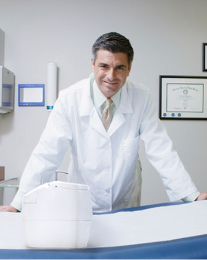When people with COPD illness experience periods of increased symptoms, it’s known as COPD exacerbation. These COPD flare-ups can often require medical help and hospitalization. Depending on the severity of COPD exacerbation you are experiencing, it is possible for them to cause further lung damage, so it is essential to seek medical help.[1]
Common Causes of COPD Flare-Ups
A COPD trigger is anything that causes you to have a flare-up of symptoms such as shortness of breath, wheezing, coughing, or fatigue.[2] There are a number of different causes of COPD flare-ups and depending on your health and lifestyle, many can be avoided. It is helpful to be aware of triggers that may cause COPD exacerbation symptoms so you can avoid them whenever possible. Lung infections (for example, pneumonia and flu) are the most common cause of COPD flare-ups.[3]
Here are some of the other common causes of COPD flare-ups.[1]
- Indoor triggers such as
- Tobacco, pipe, or cigar smoke
- Smoke from fireplaces or wood stoves
- Perfumes, colognes, hairsprays, or other scented products Paint fumes, cooking odors, cleaning products or solvents
- Pet hair or dander
- Dust, mold, mildew or dust mites
- Outdoor triggers such as
- Exhaust fumes, smog and air pollution
- Grass cuttings, lawn dressings and fertilizers
- Pollen and molds
- Insect sprays
- Chemicals fumes in the workplace
- Abrupt changes in weather, extreme cold, heat or humidity
- Gusty winds or high altitudes
- Heart failure[3]
How to Minimize Your Risk of COPD Flare-Ups
While certain triggers cannot be avoided, and periodic COPD illness and inflammation is likely to occur, knowing how to avoid common causes of COPD flare-ups can help reduce your risk of exacerbation. In order to minimize your risk of COPD exacerbation, it is recommended that you follow these tips to avoid triggers and minimize discomfort and symptoms of a COPD flare-up:2
- Avoid secondhand smoke. Even third-hand smoke should be considered unsafe.
- Avoid using your fireplace or wood-burning stove. If you can’t, stand well away from them and ensure proper ventilation. The same applies to outdoor barbecues.
- Monitor weather reports and stay indoors when the air quality is poor.
- Maintain proper ventilation by opening doors and windows or running an air conditioner in the fan mode. Avoid extra cold, air-conditioned air.
- Get a humidifier to reduce dust and pollen in the air. Commercial air purifiers may also be helpful if you are vulnerable to airborne triggers.
- Vacuum and dust daily to cut down on pet dander and dust mites.
- Avoid scented products and ask family and friends to avoid wearing them. Wear a scarf around your face in cold or gusty weather.
- Use caution at higher altitudes. You may need to speak with your healthcare provider about using oxygen when traveling to higher elevations
Symptoms of Exacerbations[1]
In order to identify a COPD exacerbation as it is coming on; it is helpful to know the symptoms of COPD flare-ups so you can watch out for them. COPD exacerbation symptoms can come on unexpectedly, so make sure you know what to look for.
You might be more short of breath or wheeze and cough more than you usually do. Other symptoms include:
- Fatigue or unusual sleepiness
- Fever, scratchy throat or other signs of a cold
- Coughing up more mucus than usual or it turns green, tan, or bloody
- Swollen ankles
- Confusion
Most importantly, never hesitate to call your healthcare provider at the first sign of an upper respiratory infection, including a cold or flu. If you have COPD, it’s important to catch these early as they are the number one cause of an exacerbation.
Using Inogen with COPD
A variety of treatments may be used to treat your COPD flare-ups depending on the cause and severity of COPD exacerbation you are experiencing. Treatments may include bronchodilators, glucocorticosteroids, respiratory stimulants, antibiotics and oxygen therapy.[4] If your doctor prescribes oxygen therapy for your COPD exacerbation, Inogen’s portable oxygen concentrators can help.
COPD sickness impacts your daily life, even in its early stages. However, oxygen therapy can help improve oxygen levels in the blood and ease the related symptoms, such as shortness of breath.[4] Inogen’s purpose is improving lives through respiratory therapy, so we have developed compact, portable oxygen concentrators to help you get the oxygen you need, at home or away, all day, every day. The Inogen One G4, Inogen One G3, and Inogen One G5 are all small and lightweight enough to carry with you. As always, it is important to listen to your doctor’s recommendations and oxygen therapy must be used under medical advisement. However, many COPD patients find that oxygen treatments greatly reduce their quality of life after a COPD exacerbation.[4]
Talk to your doctor today about whether oxygen therapy is right for you, and contact Inogen to find out more about how our portable oxygen concentrators can help you manage your COPD exacerbation symptoms. COPD sickness may require some life changes, but Inogen can help. Find out more today.










